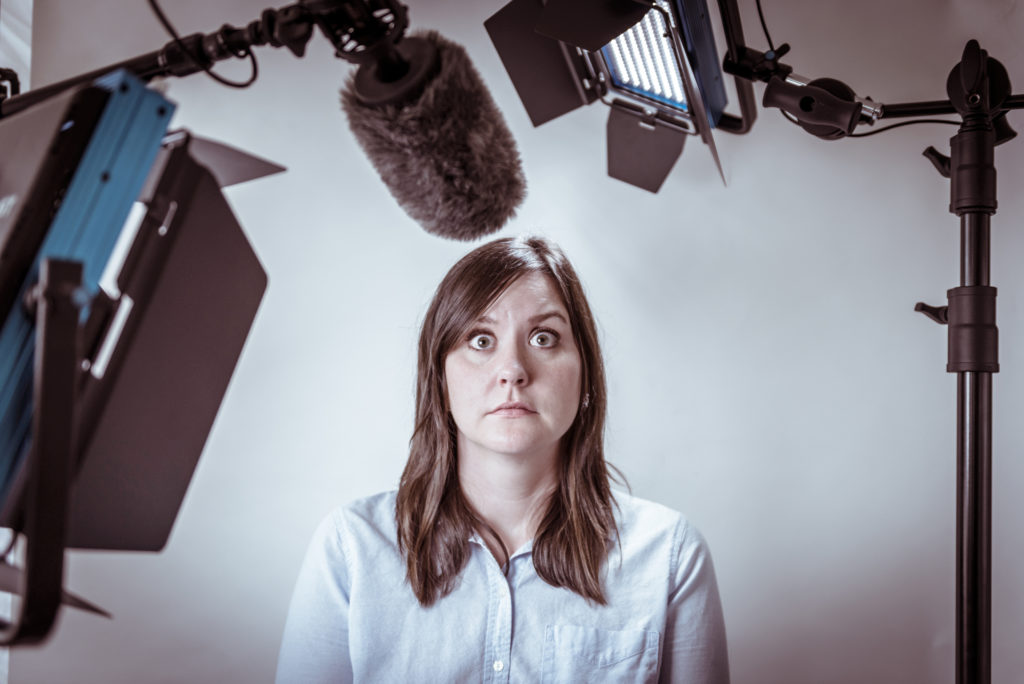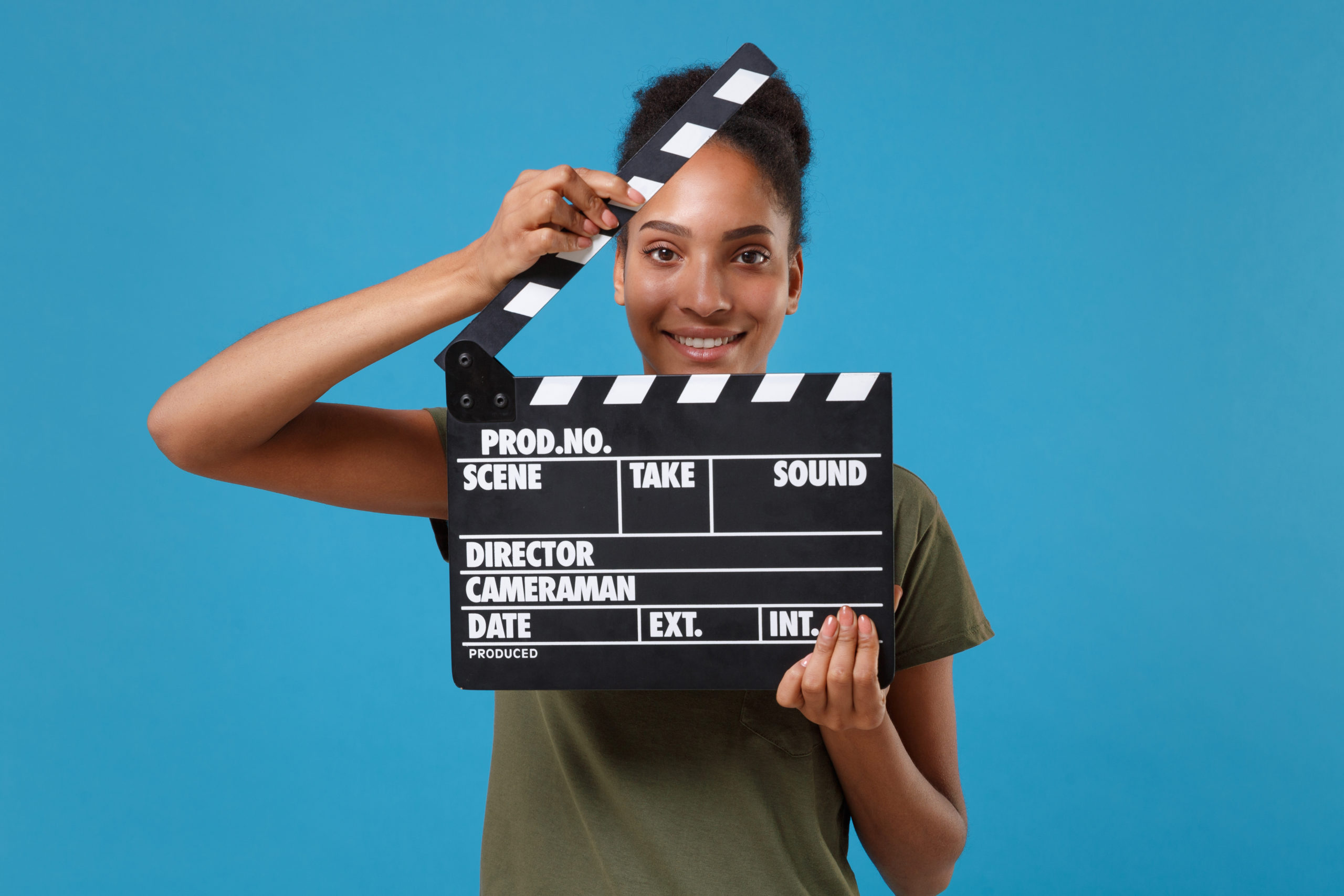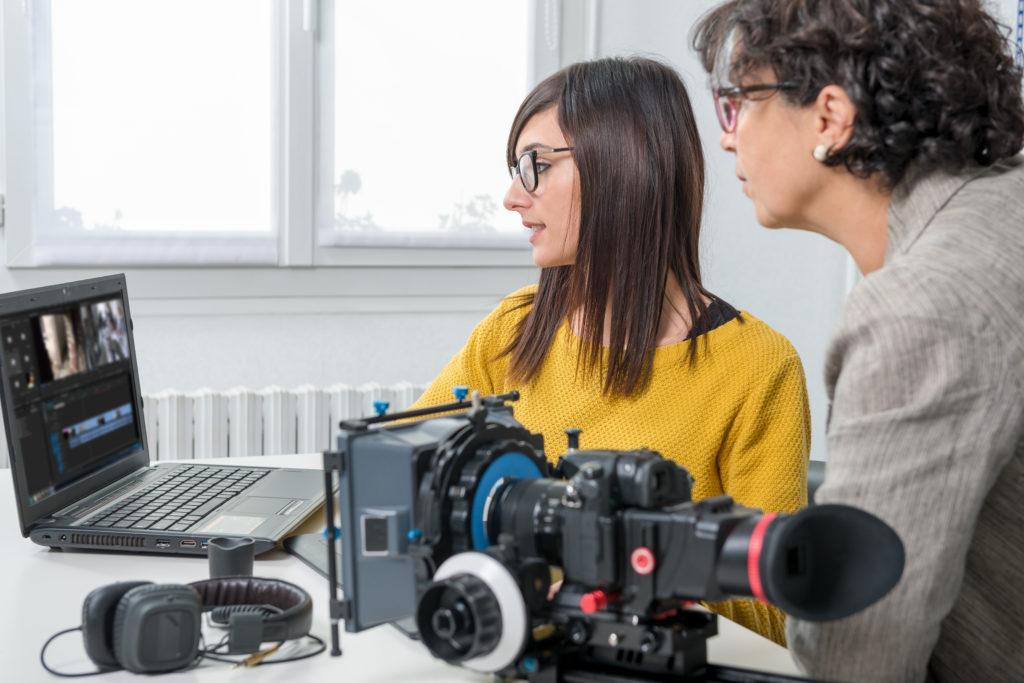If you’re like most people, you probably feel like you’re spending more time on camera lately. Between Zoom meetings, FaceTime calls, video presentations, and social video content, there are tons of ways you might find yourself being recorded.
For most of us, talking to a blinking dot on a camera or laptop feels unnatural and somewhat uncomfortable. This is especially true if you’re recording content that isn’t live—i.e., you’re talking, but there’s no one on the other side of the camera actually listening to you.
The good news is that, as with most new ventures, talking on camera gets more comfortable the more you do it. But, there are some steps you can take to make it easier on yourself in the meantime. Here are our five tips for helping yourself feel more natural on a recording.

1. Lower your expectations.
This tip is the most important starting point. Unless you’re starting your video journey with a high-stakes piece of content, lower your expectations. There are a few reasons you can do this without worrying about the impact on your results. Firstly, audiences love authenticity. If you stumble over a few words or your dog makes an appearance in the background for a few seconds, that’s okay! People appreciate realness. Second, you’re probably overestimating how “perfect” your video needs to be in the first place. As long as your point comes across and people can see and hear you pretty well, you’re doing great.
2. Imagine your audience listening.
If you’re recording a video to share business tips on LinkedIn, for example, imagine a few of your LinkedIn connections listening to your information. After all, those people will be hearing your content, just not in the moment you’re recording. Imagining their presence can help you tune into your audience, making the interaction feel more natural.

3. Know your talking points.
Preparing your key points ahead of time often helps with nerves while you film. If you know you’re someone who does better when speaking off the cuff, go for it! Alternatively, if you know you work best with a full script to glance at, that works too. Do whatever you know helps you, but many people will find that having a few talking points prepared lets you release any stress about forgetting to mention something important while still sounding natural on camera.
4. Ask for feedback.
If you’re concerned about how your content is coming across or what your video weaknesses might be, ask someone! Share your video with a trusted friend or family member, or ask your work colleagues or a fellow content creator you admire for tips. Once you’re confident that your content is coming across successfully, you’ll have less to worry about.

5. Keep doing it!
The more you film content, the more comfortable you’ll feel over time. For one thing, you’ll learn tips and tricks that make the process feel less foreign. Once you understand the ins and outs of the technical side of the process, like getting set up or saving your recording successfully, you’ll be able to focus more intently on how you actually deliver your information. Plus, you’ll get more comfortable with that part, too, just from exposure. Keep at it! We promise it gets easier.


